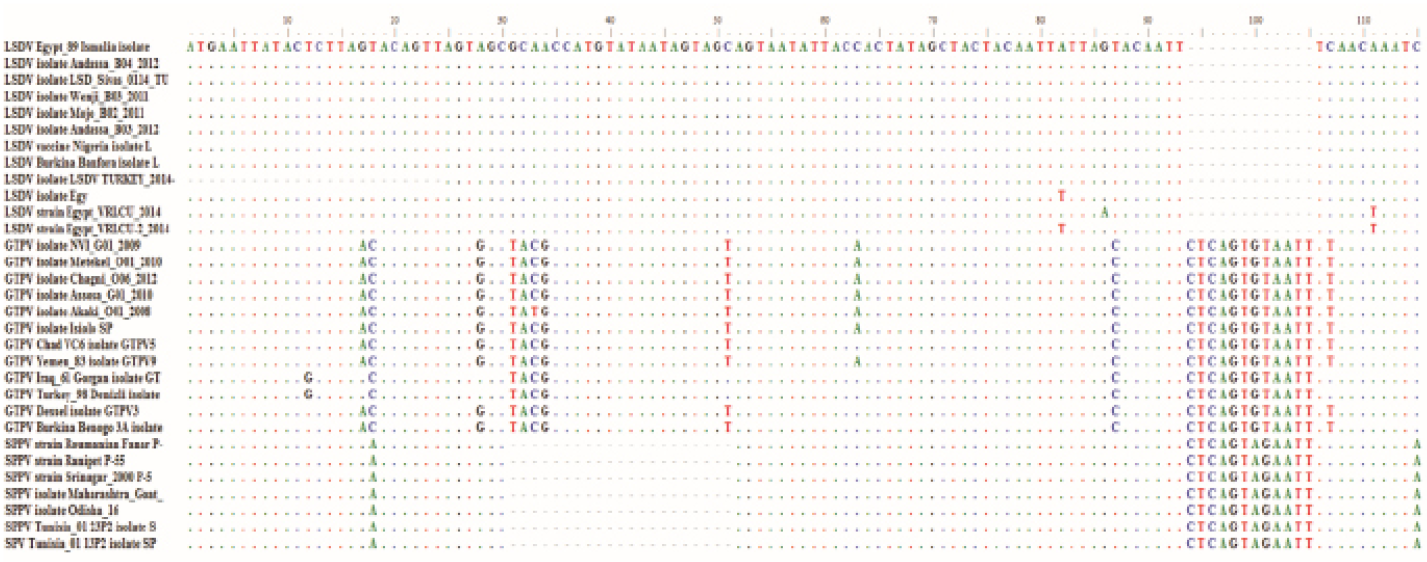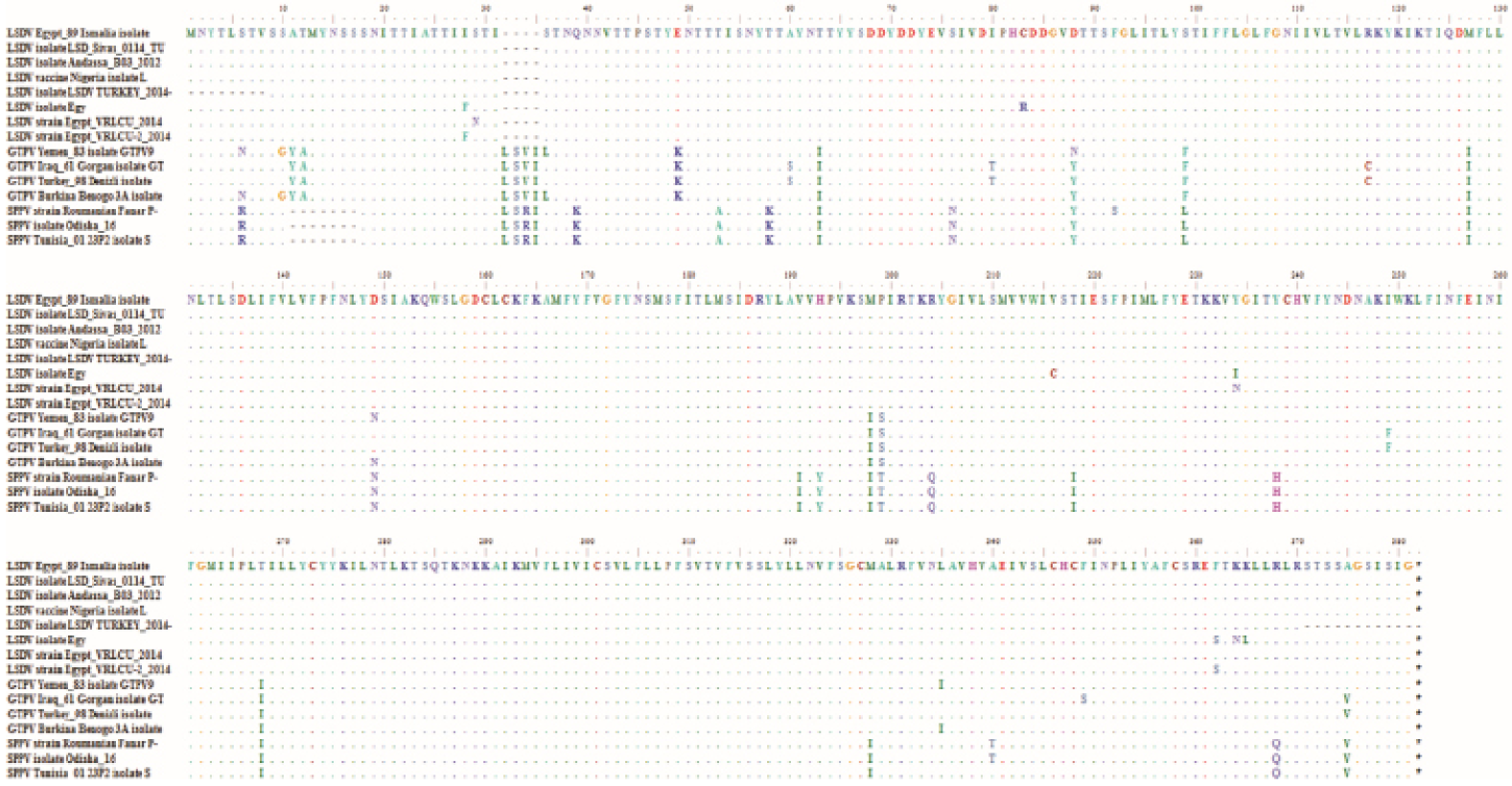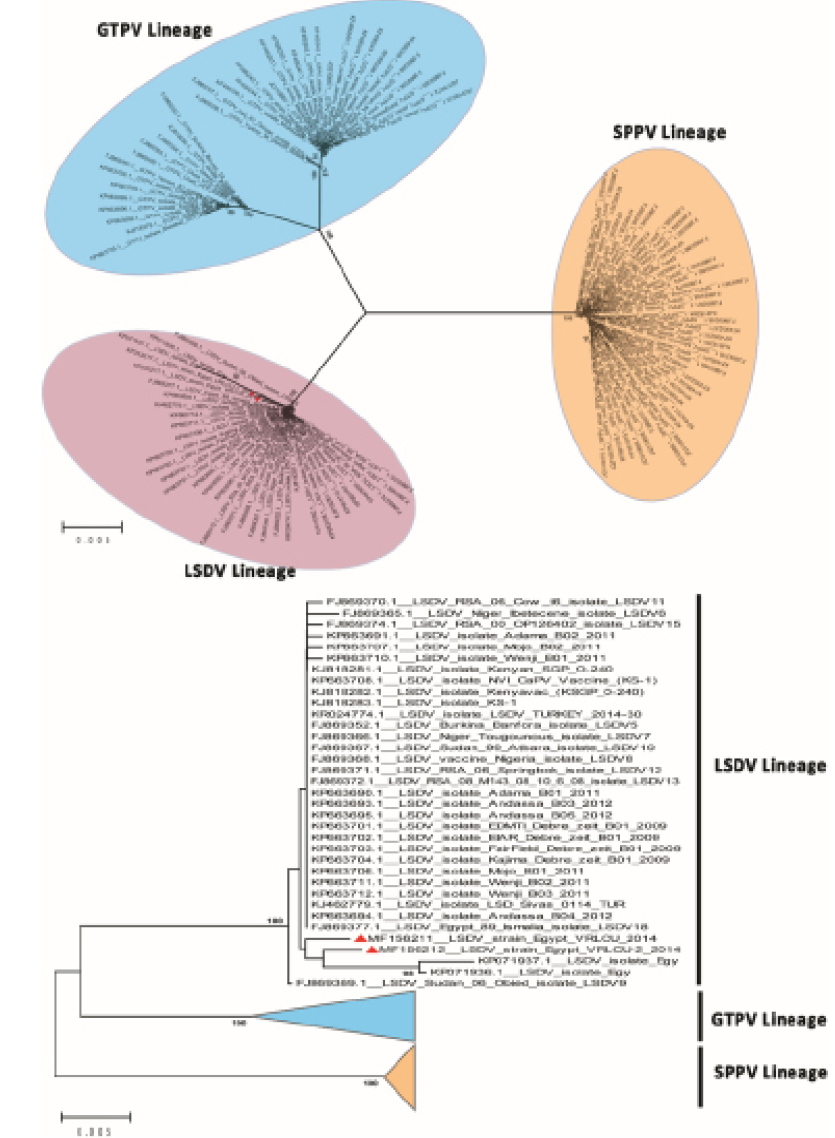Role of Ixodid (Hard) Tick in the Transmission of Lumpy Skin Disease
Role of Ixodid (Hard) Tick in the Transmission of Lumpy Skin Disease
Hussein Aly Hussein1*, Omneya Mohamed Khattab2, Shereen Mohamed Aly2, and Mohammed Abdel Mohsen Rohaim1
The multiple alignments of first 115 nucleotides of the obtained nucleotide sequences of LSDV G-protein-coupled chemokine receptor genes of LSDVs detected from ticks along with sequences of published CaPVs on GeneBank. The figure shows addition of a 21 nucleotide fragment (from position 31 to 51) and deletion of a 12 nucleotide fragment (from position 87 to 98) in LSDVs when compared with sequences of sheep poxvirus and goat poxvirus.
The multiple alignments of the deduced amino acids of G-protein-coupled chemokine receptor gene of LSDV isolates from ticks along with sequences of reference LSDVs retrieved from GeneBank show the unique signature of LSDV (A11, T12, T34, S99 and P199).
The phylogenetic tree based on G-protein-coupled chemokine receptor (GPCR) nucleotides sequences of LSDV isolates from ticks with other CaPVs which retrieved from the GeneBank database.









